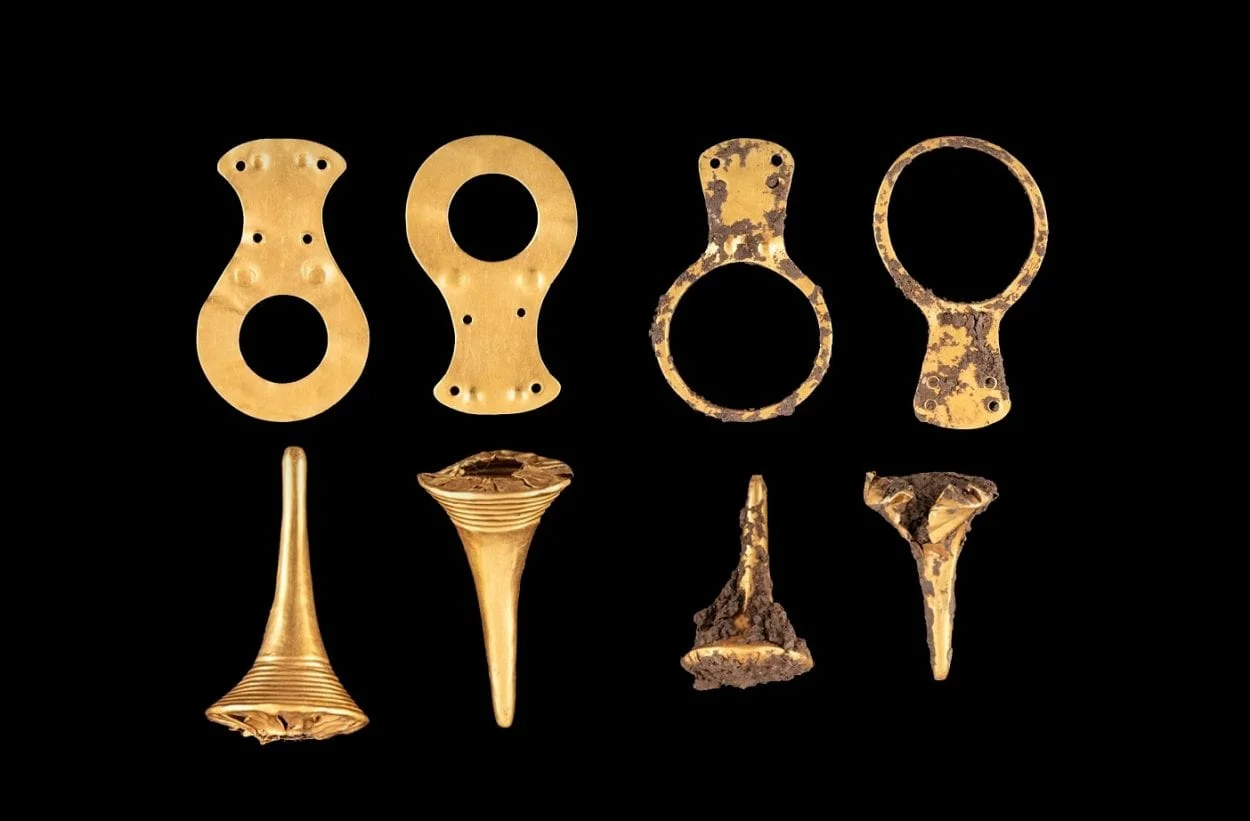Archaeologists from the Herman Ottó Museum in Miskolc have discovered a treasure-trove of golden artefacts during excavations of an ancient cemetery.
The discovery was made near the village of Bükkábrány in the Borsod-Abaúj-Zemplén county of Hungary.
Previous studies of the area found sixteen preserved trunks of cypress trees from one of the oldest known fossil forests, estimated to be between seven to eight million years old.
Archaeologists have been conducting ongoing excavations over the past decade to rescue any archaeological material under threat from extensive lignite mining operations in the area.
The team recently discovered a cemetery containing 34 graves dating from the Copper Age around the 4th millennium BC. Within the cemetery, archaeologists excavated the tombs containing the remains of three women who were buried with various gold objects, consisting of hoops and conical plate pendants that may have been part of a ceremonial headdress.
Researchers believe that the pendants symbolise the stylised female figure, with the embossment of punctured bumps to embody a feminine form.
Another burial containing the remains of a high-status male was also excavated with associated grave goods, consisting of a cracked stone blade, a polished stone axe, and a copper pick.
It is speculated that the raw material for the grave-goods were obtained from the Carpathian Basin by surface ore collection and placer mining for minerals such as gold extracted from streams and rivers.
In addition to the Copper Age Cemetery, archaeologists excavated Late Copper cattle sacrifices, as well as Sarmatian villages within the area of the lignite mining operations.

Header Image Credit : Herman Ottó Museum







